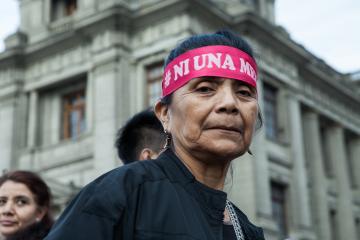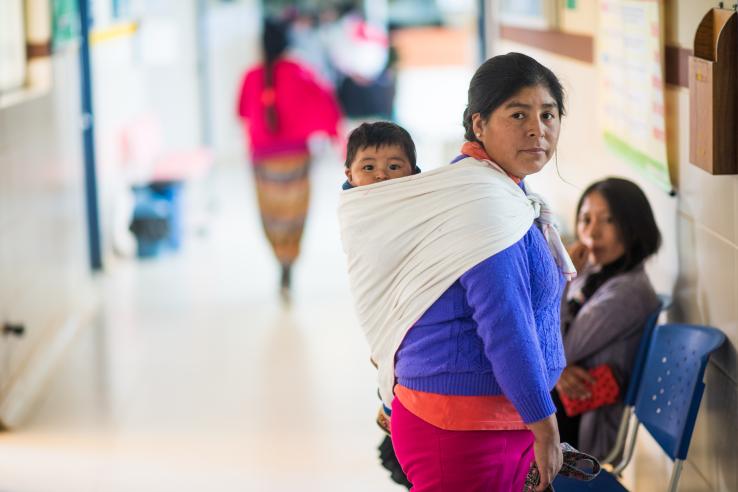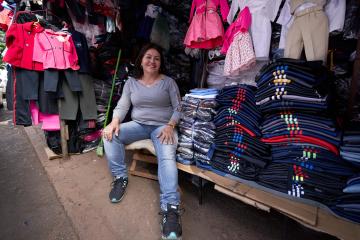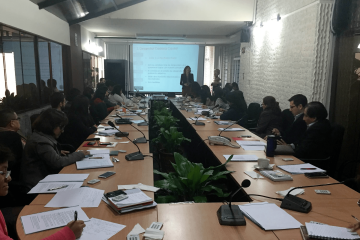
The effect of cash transfers on women's well-being: Lessons from evidence in Latin America

Cash transfers are among the most popular methods for improving the socio-economic conditions of individuals of historically disadvantaged groups. In different situations, cash transfers have been found to increase infant brain activity, school participation, and even reduce violence. However, there is no consensus on the effects of cash transfers on women's lives, especially regarding empowerment and violence perpetrated by their intimate partners. What does the existing research say about it?
This blog post presents the results of some evaluations and quasi-experimental studies of unconditional and conditional cash transfer programs conducted in Latin America. We draw lessons for policymakers from the research on the scope and limits of these programs for improving women’s well-being. Still, open research questions remain, and more rigorous evidence is needed.
Who pays the piper, calls the tune? Cash transfers and women’s empowerment
Cash transfers aim to increase overall well-being through greater access to goods and services and empowering people to make choices that bring them the most significant benefits. It can also contribute to women's economic empowerment by enabling them to generate income, participate in the labor market, control resources, and make economic decisions if the program design ensures women’s control over the resources they receive and address gender-specific constraints.
A review of evaluations in twenty low- and middle-income countries found that ensuring women have control over transferred money within their households could improve women's economic empowerment. For example, transferring funds through direct deposits to women’s accounts or mobile payments gave women more control over the use of financial resources and improved economic empowerment.
However, even if a program is intended to enhance women’s empowerment, limitations and unexpected outcomes may arise. The above-mentioned evaluation review shows that the availability of resources does not necessarily improve women's involvement in economic decision-making. A quasi-experimental study on the Familias en Acción program, which aims to improve children's health through transfers targeted at women in Colombia, showed increased use of preventive health services, food consumption, and dietary diversity. Despite hopes that the program would strengthen women’s empowerment, the transfer did not increase women’s involvement in decision-making processes about taking children to the doctor or buying food.
The authors hypothesize that women did not make decisions as a strategy to avoid domestic conflicts—even violence— related to the control of resources. Although this hypothesis is interesting, rigorous evidence is needed to understand the limits of cash transfers on women’s empowerment.
In light of these results, it should be taken into account that the outcomes measured are often associated with the conditions associated with the cash transfer programs. This can make it challenging to determine whether the effect on the empowerment is explained by the receipt of the resources or the requirements for accessing them.
Cash transfers and intimate partner violence
Some evaluations have been developed to measure other outcomes, such as the prevalence of intimate partner violence (IPV) experienced by female beneficiaries of cash transfers. On this matter, findings from rigorous evidence suggest a decrease in IPV is linked to receiving a cash transfer.
For example, a randomized evaluation conducted in Ecuador shows that physical and sexual violence and intimate partner controlling behaviors decreased by 6 to 7 percentage points in women who received the Bono de Desarrollo Humano (BDH), an unconditional transfer for households in the first two income quintiles.
However, a secondary randomized evaluation of the effects of the BDH program among female recipients shows diverging results. While women with more than six years of schooling experienced lower levels of emotional violence, women with six years or less of schooling and whose education level was equal to or higher than their partners experienced increased emotional violence. Along the same lines, an earlier randomized evaluation of the impact of Progresa/Oportunidades—a conditional cash transfer program in Mexico aimed at improving health, incomes, and nutrition—on the prevalence of aggressive behavior linked to alcohol abuse found that aggressive behavior increased in households of the women who received larger transfers.
Moreover, cash transfers may yield varied results depending on the type of violence. For example, a non-experimental study about the impact of Progresa/Oportunidades on IPV suggested that, although women in beneficiary households are less likely to experience physical violence, they tend to experience emotional violence to a greater extent than women in non-beneficiary homes. However, rigorous evidence is needed to further understand these findings.
If the programs are similar, why do the results differ? The authors of the randomized evaluation of BDH acknowledge that the aggressor’s instrumental use of violence is relevant to advancing the possible outcomes of these interventions. In a meta-analysis on cash transfers and their effects on IPV, researchers hypothesize that the results may vary depending on the motives behind the decision to use violence. For instance, if the violence exercised against women aimed to extract more resources, cash transfers may increase the probability of women suffering an episode of violence from their partner; if violence is a stress release mechanism associated with the lack of resources, a cash transfer may reduce IPV.
Lessons for future programs
Undoubtedly, there are elements of cash transfers that help decrease IPV and strengthen women’s empowerment; simultaneously, this evidence also points out the limits of such programs. In order to understand how cash transfers contribute to women's well-being, we need further rigorous evidence on the effectiveness of such interventions in different contexts.
In addition, policymakers should consider existing evidence when designing and implementing cash transfer programs to strengthen women’s empowerment or reduce IPV. In particular, they should pay attention to those factors that could jeopardize the effectiveness of the intervention, such as gender norms and household dynamics or the instrumental use of violence.
The J-PAL’s Gender and Economic Agency Initiative has been working in different places, such as East Africa and South Asia, to push forward innovative research on strategies to enhance women’s economic agency. The initiative’s recent expansion to Latin America and the Caribbean opens a path to developing evidence-informed policies that emphasize strengthening women's empowerment.
This blog post is the last in a series commemorating International Women’s Day. The series highlights examples of how evidence and collaborations between academia, governments, and civil society help us address the challenges women experience in different aspects of their lives. Check the first, second, and third blog posts of the series. We want to thank Gaby Bustamante, Valeria Lentini, and Yvette Ramírez for their input on this piece.


